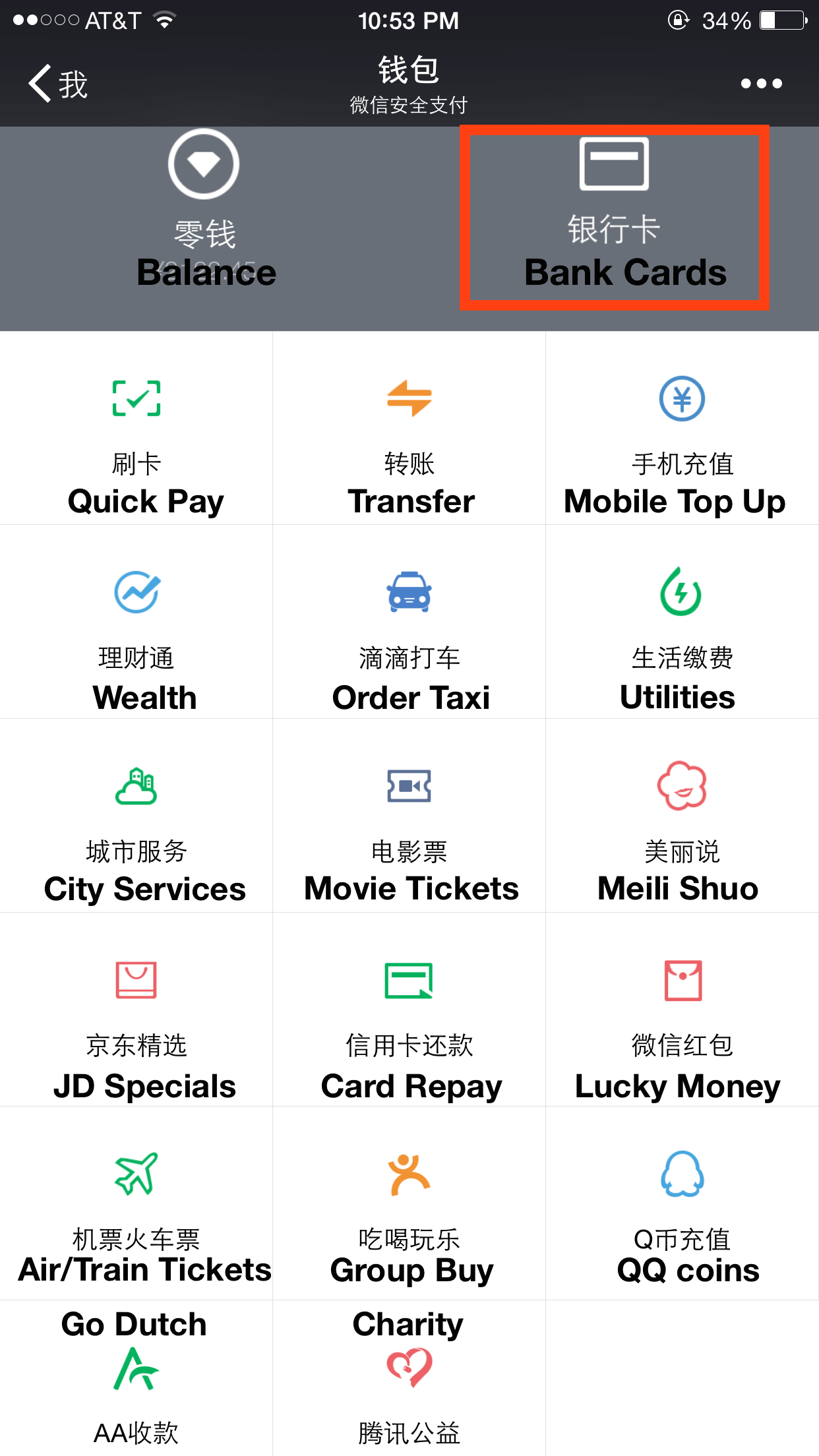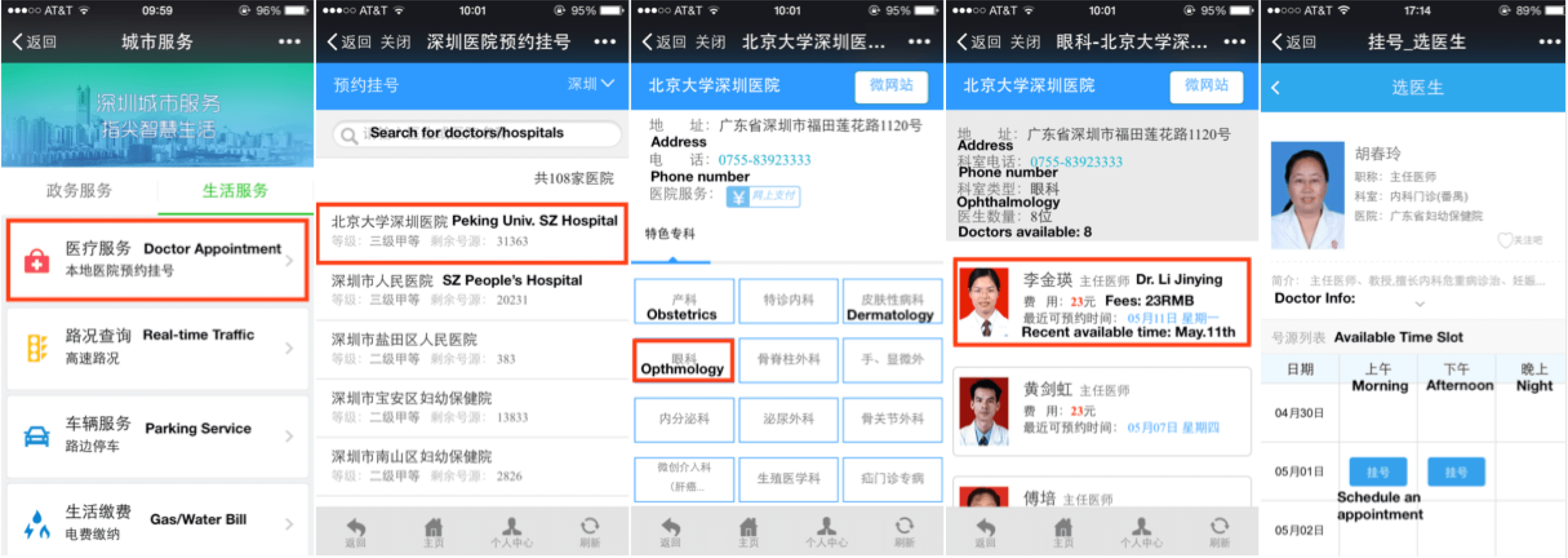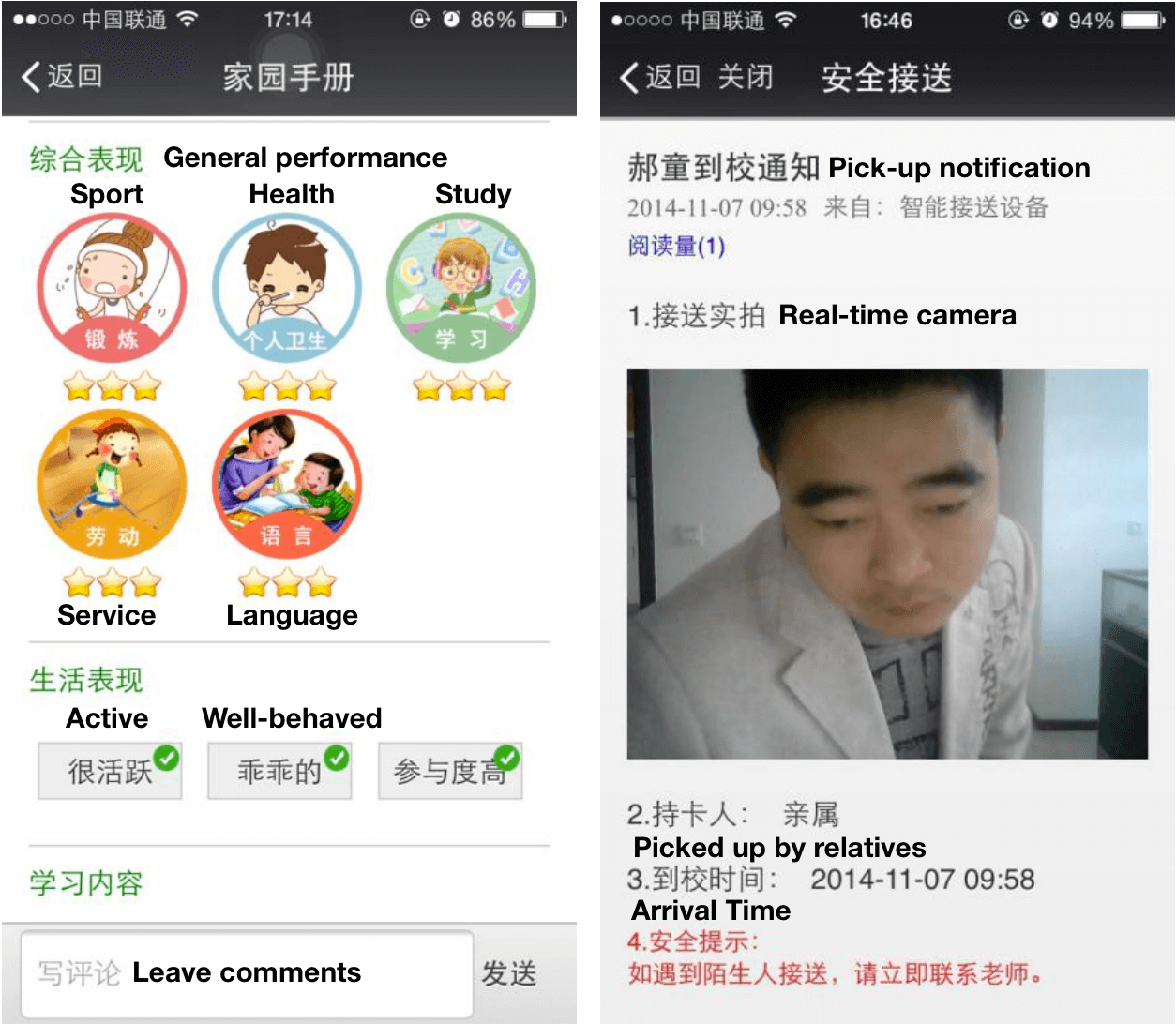listen to the audio version of this article:
This post is all about WeChat, but it’s also about more than just WeChat. While seemingly just a messaging app, WeChat is actually more of a portal, a platform, and even a mobile operating system depending on how you look at it.
Much has been written about WeChat in the context of messaging app trends, but few outside of China really understand how it works — and how it can pull off what for many companies (and countries) is still a far-off vision of a world managed entirely through our smartphones. Many of WeChat’s most interesting features — such as access to city services — are not even visible to users outside China. So why should people outside of China even care about WeChat? The first and most obvious reason is that it points to where Facebook and other messaging apps could head. Second, WeChat indicates where the future of mobile commerce may lie. Third, WeChat shows what it’s like to be both a platform and a mobile portal (what Yahoo could have been).
Ultimately, however, WeChat should matter to all of us because it shows what’s possible when an entire country — which currently has a smartphone penetration of 62% (that’s almost 1/3 of its population) — “leapfrogs” over the PC era directly to mobile. WeChat was not a product that started as a website and then was adapted for mobile, it was (to paraphrase a certain movie) born into it, molded by it.
Most notable, however, for anyone in the tech business is WeChat’s average revenue per user or ARPU, which is estimated to be at least $7 USD — that’s 7X the ARPU of WhatsApp, the largest messaging platform in the world. How did WeChat do it?
But first, some background: What is WeChat?
Known in Chinese as Weixin (微信) — “micro letter” — WeChat is first and foremost a messaging app for sending text, voice, and photos to friends and family. It was launched just 4 years ago by Chinese investment holding company Tencent, one of the largest internet companies in the world. As of earlier this year, WeChat had 549 million monthly active users (MAUs) among over one billion registered users, almost all of them in Asia. To put that in context: That’s only 150M MAUs fewer than Facebook Messenger, almost 3x the MAUs of Japan’s Line, and 10x the MAUs of Korea’s Kakao (which Tencent is also an investor in). [Tencent is also a strategic investor in a number of U.S. startups, including some of ours.]
Downloading the app is free, and WeChat has only just begun to experiment with advertising revenue, so where then does its ARPU magic lie? (Especially when one remembers the difficulty of monetizing other universal, utilitarian services like email.) The short answer is that it offers more functionality. Along with its basic communication features, WeChat users in China can access services to hail a taxi, order food delivery, buy movie tickets, play casual games, check in for a flight, send money to friends, access fitness tracker data, book a doctor appointment, get banking statements, pay the water bill, find geo-targeted coupons, recognize music, search for a book at the local library, meet strangers around you, follow celebrity news, read magazine articles, and even donate to charity … all in a single, integrated app.
In WeChat’s case, chat — not other content streams or a search box — is the “universal” UI. (And while this post is not focusing on design, it is worth noting that Chinese apps tend to combine as many features as possible into one application. This is in stark contrast to Western apps, which lean towards “app constellations”.)
How WeChat works #1: The app-within-an-app model — changes everything we think we know about ‘web vs. mobile’
Philosophically, while Facebook and WhatsApp measure growth by the number of daily and monthly active users on their networks, WeChat cares more about how relevant and central WeChat is in addressing the daily, even hourly needs of its users. Instead of focusing on building the largest social network in the world, WeChat has focused on building a mobile lifestyle — its goal is to address every aspect of its users’ lives, including non-social ones.
The way it achieves this goal is through one of the most unsurfaced aspects of WeChat: the pioneering model of “apps within an app”. Millions (note, not just thousands) of lightweight apps live inside WeChat, much like webpages live on the internet.
This makes WeChat more like a browser for mobile websites, or, arguably, a mobile operating system — complete with its own proprietary app store. Not what we’d expect from a messaging app.
The lightweight apps on WeChat are called “official accounts”. Approved by WeChat after a brief application process, there are well over 10 million of these official accounts on the platform — ranging from celebrities, banks, media outlets, and fashion brands to hospitals, drug stores, car manufacturers, internet startups, personal blogs, and more. It’s important to emphasize that these official accounts are nothing like verified accounts on U.S. social networks, where being “official” is mainly a badge of authenticity or identity verification. On WeChat, official accounts are approved to access exclusive APIs for payments, location, direct messages, voice messages, user IDs, and more. (Not every official account uses these APIs, but there are still millions of them that indeed are app-like.)
For the end-user, adding an official account is as simple as adding a friend. Furthermore, because users have to opt-in to official accounts, they are essentially always “logged in” to them. This is especially effective for lower frequency but important services like managing credit card statements or utility bills. Such apps are perfectly suited to the lightweight app model, because users are spared the trouble of downloading separate native full-featured apps (yet can still choose to do so if the preview of what the app does seems compelling enough). It’s a win-win either way.
Developing official WeChat accounts has become so popular in China that new startups sometimes test their version 1.0 product on WeChat’s platform before dedicating resources to building and marketing a standalone native app. Another benefit for developers is getting core app functionality without having to support multiple mobile OSes. Developers are also not forced to stay within the look-and-feel of the WeChat client, i.e., they aren’t constrained to some subset of HTML5. So when a user interacts with an official account, the user can click to a full web application experience without ever leaving WeChat. This empowers developers to deliver distinctive, custom app-like experiences while WeChat enforces the rules (messaging frequency, sensor permissions, etc.) that protect users.
These web-enabled, app-within-an-app official accounts are a breakthrough in messaging, and are one of many reasons that WeChat has become a flourishing platform for any company or influencer that wants a mobile presence in China.
How WeChat works #2: Payments as a portal to a brave new mobile world
 The apps-within-an-app model described above is all about the official accounts platform. But the cornerstone of this model is payments, which are managed through a portal that lives in a completely separate part of the app from official accounts (yet is still readily accessible). That portal takes the form of the WeChat “Wallet”, which is not a traditional wallet but a menu of carefully curated, pre-selected service providers that users can transact with after inputting their payment credentials.
The apps-within-an-app model described above is all about the official accounts platform. But the cornerstone of this model is payments, which are managed through a portal that lives in a completely separate part of the app from official accounts (yet is still readily accessible). That portal takes the form of the WeChat “Wallet”, which is not a traditional wallet but a menu of carefully curated, pre-selected service providers that users can transact with after inputting their payment credentials.
I cannot emphasize the importance of this Wallet enough. It’s the Trojan horse that allows WeChat to quickly onboard user payment credentials that then unlock new monetization opportunities for the entire ecosystem. (Which is why it’s very revealing that Facebook hired the former CEO of Paypal to head up its own messaging platform efforts.)
To get a sense of how pervasive and successful this approach has been: At least one in five active WeChat users are set up for WeChat “Payments”, a process that begins in the Wallet menu by linking a banking or credit card to the user account. Being set up for WeChat Payments means instant, frictionless ability to transact on the WeChat Wallet services, all official accounts that sell products or services, and any associated promotions or campaigns.
To get a sense of this in the U.S.: Just imagine how many more transactions would occur on Facebook’s platform if more users linked their credit cards to Messenger, how much faster Pinterest’s buy-it button would take off, how much faster Snapchat users would move from sending cash to buying goods, and how many more Twitter users would pursue options to buy products. In this sense, WeChat gives us a window into the potential evolution of Western social networks and buying behaviors if they, too, succeed in convincing users to embrace payments on their platforms.
In China, meanwhile, usage of the WeChat Payments platform is growing so quickly that WeChat is experimenting with processing payments offline via QR codes at brick-and-mortar stores, live events, vending machines, restaurants, and hotels. The network effects are obvious and substantial: The more places that accept these payments, the more users will jump on board (and it goes both ways, both offline and online) … benefitting everyone all round.
So what makes the wallet model work? The WeChat Wallet menu has several portal-like characteristics: as mentioned earlier, it has 1) built-in trust since designated partners have been vetted and selected by Tencent, as well as 2) automatic authentication of identity and payment, and 3) the ability to offer seamless experiences with third parties while never requiring the user to leave the WeChat app. For example, I’ve often heard people say they use “WeChat to hail a taxi,” when in fact ride-sharing service Dididache is actually providing that transportation service. Similarly, here’s an example of making a doctor appointment using WeChat, which appears seamlessly integrated within the app even though it is powered by third-party reservation service Jiuyi160.com:

These 5 screenshots, viewed left to right, show the flow of booking a doctor appointment via WeChat Wallet
Note that to implement this direct doctor appointment feature, WeChat did not have to go sell some enterprise solution to hospitals in what would otherwise have been a long process (“like passing a bill through Congress”). Instead, WeChat focuses on taking care of the plumbing — overseeing the integration of such pre-existing services into its portal — by simply linking users from the wallet menu to webpages from within the app. It’s yet another way in which WeChat becomes an integrated browser for the mobile (and web) world.
How WeChat works #3: Kingmaking power where commerce (not just content!) is king
Widespread adoption of WeChat Payments didn’t happen overnight; it was seeded through lots of proactive promotion. For example, earlier this year, Tencent launched a Chinese New Year campaign where third party advertisers gave away 500M RMB (~$81M USD) of free cash in red envelopes to WeChat Payment users in a single day. Prior to that, WeChat and ride-sharing service Dididache incented users to sign up for payments by offering free ride giveaways and discounts for hailing a taxi via WeChat.
WeChat has also been busy creating tools so that official accounts can open e-commerce stores that accept WeChat Payments — essentially making every business, including mom-and-pop shops without advanced tech or e-commerce resources, an instant mobile store.
Beyond these promotions and resources, Tencent architected, and in some cases, subsidized the payments system in WeChat’s early days. The resulting user adoption and portal model has given Tencent a kind of “kingmaking power” for Chinese apps (and by association, internet startups in China) because partner companies selected to be part of the WeChat Wallet portal get instant exposure to hundreds of millions of users.
Having access to that kind of distribution is very hard for any partner company to turn down, despite the platform risk. But this is where aligned financial interests help protect some startups from the downsides of WeChat platform dependence: Most of the companies highlighted in the WeChat Wallet portal have taken investment dollars from Tencent, or were launched by them. This might explain why other Chinese internet giants with similar distribution power (Alibaba, Baidu, Qihoo360, and Xiaomi) have all been doubling down on early stage investments and going head-to-head with China’s top VC firms. Imagine what would happen if that trend moved to the U.S., and if Facebook or Snapchat ever decided to strike favorable deals through early stage investing.
How WeChat works #4: When mobile doesn’t just navigate, but moves into the physical world
When people talk about mobile, they often throw concepts like “context-aware”, “sensor-enabled”, “personalized”, “interactive”, and other terms around. But in the U.S., these concepts remain either buzzwords or solo features in individual apps. We just don’t see the level of integration and frictionless mobile-first experiences we see in places like China through WeChat.
To put it bluntly: It’s like killing a buffalo and only using its skin for leather, as opposed to also using its meat, its milk, and more. In much the same way, most mobile experiences in the U.S. remain at a superficial, surface-only level … without really harnessing all the parts of the phone, from GPS location to sensors to voice to camera.
So where most U.S. apps confine the smartphone camera to just taking photos of people and places, WeChat engages the camera to scan English text and translate it into Chinese, or to pay directly for a transaction. WeChat also better utilizes all the other smartphone sensors as sources of data input: It uses GPS when users search for businesses nearby. It calls upon the microphone to identify a TV show or a song on the radio. It uses the accelerometer when a user shakes a device to find strangers nearby to chat with. And it uses bluetooth when users add friends in their vicinity.
Put it all together, and you can get some pretty creative results. Take Chinese toy company Dan Dan Man, which created Mon-Mon (user ID: idandanman), a bluetooth-enabled stuffed animal toy that integrates WeChat with the offline world. Parents can use the Mon-Mon official account in WeChat to send personal voice messages and pre-recorded English courses or bedtime stories to the toy while they are at work or traveling. Kids immediately get those stories or messages, and can even press Mon-Mon’s belly to reply to their parents’ WeChat account in a message delivered back as a voicemail.
 While this is just a toy — and funnily enough, a character that started off as a popular digital sticker on WeChat! — it shows the potential of integrating messaging platforms into the physical world when all the parts of the buffalo, er, smartphone are utilized.
While this is just a toy — and funnily enough, a character that started off as a popular digital sticker on WeChat! — it shows the potential of integrating messaging platforms into the physical world when all the parts of the buffalo, er, smartphone are utilized.
Of course, there are many other, more useful examples of such online-offline integrations. With the 7-Eleven official account (user ID: GD7-11) for example, users can pay at 7-Eleven and Family Mart physical stores through a breezy, easy payment process where the cashier uses a standard handheld barcode scanner to get the customer’s Quick Pay barcode at the point of sale. 7-Eleven can then also target users with custom promotions at an optimal frequency that doesn’t flood them with unwanted marketing. Meanwhile, the Mei Wei Bu Yong Deng official account (user ID: mwbyd-now) lets users search through a directory of restaurants nearby, see how many people are currently waiting in line for a table at those restaurants, and even grab a number to wait in line without being physically present at the restaurant.
And finally, it’s worth noting that WeChat is, according to Tim Cook on Apple’s most recent earnings call, one of the top 3rd-party apps used on the Apple Watch. The possibilities for online-offline integration through wearables haven’t really begun to be explored yet.
How WeChat works #5: Where social is just a feature, not the focus — liberating brands and celebrities in new ways
At the time WeChat was first created (2011), a Chinese Twitter-like service for 140-character posts called Sina Weibo already existed and had hundreds of millions of users. Celebrities, influencers, brands, and companies had official Weibo accounts and used them to broadcast public messages to millions of followers. For WeChat to make its official accounts platform work, then, it had to move beyond the framework and limitations of a social network — where content is king — to a system that prioritized usefulness and functionality above everything else.
This focus on function over social has significant consequences for brands. Where brands must rely on static, one-size-fits all blasts in U.S. social networks — and users are confined to only liking, favoriting, commenting on, or sharing posts — WeChat shows us what’s possible when brands are offered more options for interacting with their users. For example, where Starbucks could post an offer for all users on its Facebook page, on WeChat, it could theoretically also allow a user to inquire after their gift card balance, place a favorite drink order, find the nearest store without having to specify intent, or receive a promotion tailored to drink preferences based on the weather in that city. Where a celebrity like Taylor Swift can share 140 characters about her upcoming concert on Twitter, on WeChat, she could send a concert discount code to users who purchased her album, or charge users a small fee for daily pre-recorded morning greetings (some celebrities in Asia actually already do this!).
None of this functionality is that surprising on its own; we already expect this kind of thing inside a standalone Starbucks or Taylor Swift app. The point here is that brands are able to do this sort of personalization and interactivity from within WeChat, through official accounts. And because WeChat official accounts are not limited to the content-constrained construct of a social network, they can deliver experiences that are more personalized, interactive, and ultimately have a higher chance of converting to a transaction.
WeChat also gives official account developers the ability to precisely target and segment users so they can deliver the right set of messages to the right set of users at the right time and place. Importantly, these CRM and marketing automation tools are completely free. While other social networks may also offer granular user targeting, those targeting capabilities apply only to purchasing ads. In WeChat’s case, brands can freely use these tools in all their interactions with users as they like.
Interestingly, because the official accounts platform also allows for “white listing” of users, WeChat official accounts empower both large companies and small- and medium-sized businesses (SMBs) to create easy-to-develop enterprise-grade solutions. By tiering access and permissions to ensure that these official accounts are not accessible to all WeChat users, developers can create reference training materials, document sharing tools, business request approval workflow processes, content management systems, frontline sales interfaces, and more. Even kindergarten schools become tech-savvy with such tools:

These screenshots of Chengdu 21st Kindergarten’s official account show how parents (whose WeChat IDs are whitelisted) can see real-time updates about their child while in school [left] or a photo of who picked up the child from school that day [right]
In this way, WeChat can penetrate the enterprise much faster than competing or previous social networks. (Not unlike Slack, which is in some ways like a “white listed” chat room that has become a portal to so many other enterprise applications.)
* * *
WeChat reveals what’s possible when we take a mobile-first approach to platforms, portals, social networks, and brands. The question isn’t about how to replicate the same model elsewhere, or about why it wouldn’t (or would) work in the United States. The question we should ask, I believe, is how can every business rethink its model from the ground up, so it leads and not lags behind mobile?
It’s worth sharing that before WeChat launched in 2011, the most popular messaging app in China was called QQ — and it was also made by Tencent. QQ started on the desktop and made its way onto feature phones in 2003 and smartphones in 2008. But when Tencent realized how game-changing the smartphone really was, they decided to tackle the problem with a blank slate rather than have the QQ team try to create a better smartphone app. So WeChat was created by an entirely new group of Tencent employees who were challenged to design a mobile messaging service without the legacy of PC. The result is what I’ve outlined here, and it still only scratches the surface. Who knows what’s coming next?
Editor: Sonal Chokshi @smc90


